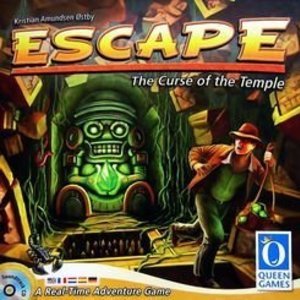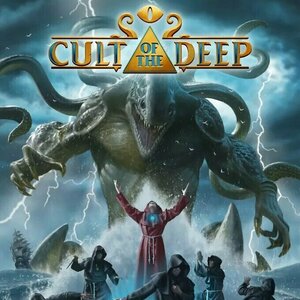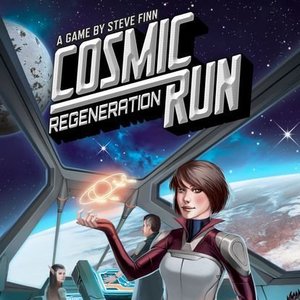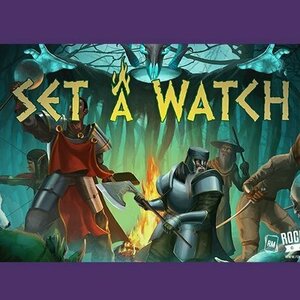
Set a Watch
Tabletop Game
The Kingdom is in grave danger. Powerful enemies are conspiring to resurrect the vile and powerful...
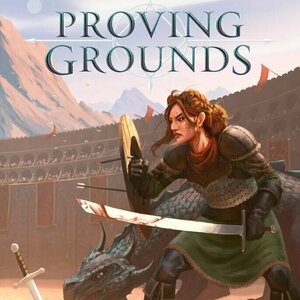
Proving Grounds
Tabletop Game
Maia Strongheart stands alone against the world. A cabal of conspirators has framed her for the...
Purple Phoenix Games (2266 KP) rated Escape: The Curse of the Temple in Tabletop Games
Jul 16, 2019 (Updated Dec 10, 2019)
Your latest quest has brought you and your comrades to an ancient temple. While exploring, you come across a treasure cache – score!! Your team decides to take it…for research purposes of course…but unbeknownst to you, this temple and its treasure are cursed, and you have just literally brought that curse down upon yourselves. The temple begins to collapse, and you and your team must make it to the exit alive! But wait, which way did you come from? Seriously? Did nobody leave any breadcrumbs? Which path is the right way? Too late to ask questions, just go! Traverse your way through this maze of a temple and get out! Will you make it out? Will your comrades make it too? I guess you’ll just have to wait and see…
DISCLAIMER: There are several expansions to this game, but we are not reviewing them at this time. Should we review them in the future we will either update this review or post a link to the new material here. -T
Escape: The Curse of the Temple is a real-time cooperative game in which players must roll dice, uncover new tiles, and find their way to the exit before the temple collapses, trapping the explorers inside. Played in exactly 10 minutes, all actions are taken simultaneously – you are trying to escape after all! By rolling dice, players can uncover new rooms and find magic gems. Once the exit tile has been discovered, all players must make their way to it and out of the temple! Strategy is key – do you move as a group in the same direction (there is safety in numbers…) or do you split up in an attempt to find the exit more quickly? That’s up to you and your team to decide – but decide quickly, because time is running out!
One super neat thing about this game is the countdown timer/soundtrack. When I say the game takes 10 minutes to play, I mean that literally – there is a timer! The corresponding soundtrack really brings the theme to life and creates a unique atmosphere. The pressure of a time limit means that players are frantically rolling dice and moving throughout the temple, just as they would be frantically searching for the exit in the real world. For a pretty simple game of dice-rolling, I think the timer adds to the overall excitement of the game – without it, there is no element of urgency and the theme would not feel as authentic.
That being said, timers kind of stress me out in games. One thing that can alleviate some of the pressure created by the timer is being able to work as a group. Cooperation is important to success because everyone wins or loses together. I don’t have to race against the clock on my own, I just need to do my part to help the group succeed. Whether it’s uncovering new room tiles or pooling dice with another player to find magic gems, winning Escape is, overall, a group effort.
If you’ve never played a real-time game or one with a timer before, I would recommend Escape: The Curse of the Temple. It’s simple enough to be a good introduction to the mechanics, yet engaging and exciting enough to keep you coming back. Purple Phoenix Games gives it a heart-pounding 17 / 24.
Purple Phoenix Games (2266 KP) rated Cult of the Deep in Tabletop Games
Feb 24, 2021
Cult of the Deep is a dice-driven, fantasy horror, hidden role game with similarities to some classic games. In it players will be donning the personas (personae?) of cultists with different roles and agendas. Players will be forming alliances with other cultists of unknown roles and possibly having their character perish and return to play as a Wraith with a totally new agenda. Each cultist’s role will have their own victory conditions to fulfill and the game ends once a player (or players) have fulfilling their victory conditions.
DISCLAIMER: We were provided a prototype copy of this game for the purposes of this review. These are preview copy components, and I do not know for sure if the final components will be any different from these shown. Also, it is not my intention to detail every rule in the game, as there are just too many. You are invited to download the rulebook, back the game through the Kickstarter campaign, or through any retailers stocking it after fulfillment. -T
Setup involves placing out the Altar Boards and Ritual Cards upon them. Players will also receive one Role, Character, Sigil, and Reference Card to use during play. Players will reveal their Character Cards and collect enough Life Tokens to equal what is shown upon these cards. Each set of dice and the coins are to be set on the table within reach. The player who received the High Priest Role Card reveals it, takes extra Life Counters, and becomes the first player. They take five Cultist Dice and the game may begin!
Each turn is divided into four phases: Roll, Commit, Response, Resolve. During the Roll phase the active player will roll five dice, and any dice may be re-rolled another two times. Once all re-rolls are complete or the player decides to stop, they will take each die and Commit them to other players, altars, or themselves. For example, if the player rolls two blood drop icons they may wish to heal themselves by two, so they can commit these dice to themselves. Should this player also have rolled any dagger icons they may commit these dice to other players in order to attack them for one life per icon. If any player has a special ability that can be enacted during the Response phase, they must now use it. One such ability may be turning a one-dagger icon into a two-dagger icon, or other abilities. Once all players have had a chance to activate any abilities during this phase, the dice must now be Resolved in any order of the active player’s choosing. So now the player can regain life counters (or even surpass their starting life total), attack other players’ life points, or activate any Altar abilities if dice were placed on Ritual Cards on altars.
The Resolve phase is where the action happens, and can lead to some serious actions. Players can be killed, Rituals can be activated, and players can be healed. If a Ritual is completed (no more activation slots remaining) during this phase, the active player becomes the Keeper of the Ritual and collects its card from the altar to be used for an immediate effect, or an ongoing effect for the rest of the game. Should a player be slain, they may return to the game as a Wraith, and thus draws a Wraith card (shown below) to now represent their altered state. Wraiths play the game differently, as they will not be able to commit any dice during their turn, but rather have their dice to be used during other cultists’ Response phases.
Play continues in this fashion of taking turns around the table until victory conditions have been met for a player or group of players. The game may be over, but the lasting effects of the results will remain in each player’s heart for some time.
Components. Again, this is a prototype copy of the game, so not all components are as they will be in the finished version. That said, we received an excellent prototype copy of the game. The cards are great, the cardboard components are equally great, and I know we were provided with examples of the Kickstarter exclusive add-on metal coins, but I certainly would spring for them. These coins are the real deal and just feel amazing to handle. I know the dice will be different upon a successful campaign, as stickered dice simply will not hold up to many plays (and I see on the KS page that the d4s will have numbers ON TOP, which is where they should be). So once all is said and done, I believe this will be a beautiful, if not dark, game with excellent components and art style.
I mentioned in my open that this game reminds me of bits of other classic games. Perhaps you were able to discern these in my description, but here are my thoughts. I enjoy dice-based hidden-role games like BANG! The Dice Game. Cult of the Deep feels similar in that players may suss out roles of other players simply by attacking them until roles are revealed or cultists slain. This is not the ideal strategy, as I have been repeatedly told by my wife, but it certain is effective. What is improved here is that players come back as Wraiths and really are not ever out of the game. This is very good, as I usually am the player who is ganged up on and first to exit any game of this type.
Secondly, rolling dice and then committing them to certain areas of the game feels extremely reminiscent of the classic Biblios. Biblios uses cards and each turn the different areas MUST be committed to, but here again Cult of the Deep improves on this mechanic by allowing the player to choose every location to which they wish to commit their dice. Maybe every turn a player will commit daggers to one player (more than likely the High Priest), or certain dice faces to heal another player, but it is not necessary, and always being aware of what faces the Rituals need to progress will also dissuade players from ganging on one player each turn.
I didn’t mention it in my description, but each player is also given a Sigil card that can be used once per game, and they are especially powerful. Having so many choices available during a turn, or even during other players’ turns makes this game unique and incredibly enjoyable.
If you are looking for a game that has that Cthulhu-esque theme, hints of other classic game mechanics, and a deluxe look, then Cult of the Deep is certainly highly recommended. It is a notch more difficult than BANG! The Dice Game, and utilizes Biblios’s resource allocation mechanic better, thus creating a great blend of each. I do think you should check out the Kickstarter campaign ending Wednesday, March 3, 2021 to back it and add it to your collection. Obviously, this isn’t for everyone, but if you have read this far, I will assume at least a small measure of interest. I believe it will be a great game to have available for the right group of people who can handle the theme and don’t mind dying and becoming a character in Lord of the Rings.
Purple Phoenix Games (2266 KP) rated Cosmic Run: Regeneration in Tabletop Games
Jun 12, 2019
Space – the Final Frontier. Well, not anymore. You’re living in the year 2123, and space travel is not a novel idea. In fact, Earth has become uninhabitable, and the human race must find a new planet to call home! You and your team of explorers have taken to the galaxies to find a suitable replacement for the future of mankind. By befriending aliens and outmaneuvering rival explorers, your team will be credited with the discovery of new colonies on these distant planets. It’s a literal Space Race, so kick on that hyper-drive and take to the stars!
Cosmic Run: Regeneration is a competitive or cooperative dice-rolling game in which players are racing to earn the most victory points by being the first to discover new planets. It’s a Yahtzee-style push-your-luck game where you must roll certain sets of identical dice to advance your ships on the individual planet tracks. Dice can also be used to ‘hire’ aliens or find crystals, which can give you special abilities once per game. The planets must be discovered in a timely manner, though, because passing meteors could cause damage to, or even completely destroy, these planets – this is space, after all. Players earn victory points in three ways – by being the first to discover a planet, based on their position on a planet’s track if they are not the first to discover it, or by retiring sets of aliens. The player with the most victory points once all 6 planets are discovered is the winner! When playing solo, the game is played essentially the same way, with some minor differences. If the solo player discovers all 6 planets before any one is destroyed or before the meteor deck runs out, they win! However, if even a single planet is destroyed or they are not all discovered before the meteor deck runs out, the solo player loses.
I enjoy playing Cosmic Run: Regeneration as a solo game because it’s simple, but not easy. You’re just rolling dice, but you need a strategy. Do you try to advance quickly on the easiest tracks, or do you commit dice to more difficult tracks and hope that the dice rolls will be on your side? Be careful – once you commit a die to a certain track, it cannot be moved. I’ve played so many games where I commit dice to Planet 2 (2-of-a-kind) and end up rolling 3 more of the same number that could’ve been used on Planet 5 (5-of-a-kind) if I’d just committed them there in the first place! A lot of the game is dependent on the luck of the roll, but I feel like you still need a solid strategy to be successful. There’s a good balance between the two – I still feel like I’m in control of the game even though I can’t control how the dice will roll.
The one main difference between solo and group play is that the solo player is allowed to spend VPs to create ‘forcefields’ around planets. This is because in group play if a planet is destroyed, players score points for their track progress, and the game continues. For the solo player, however, if a planet is destroyed, the game is over. When playing solo, I can choose to spend either 5 or 10 VPs to create a forcefield around either 1 or all planets to protect them from meteors for one turn. Without this option in solo play, it would be impossible to win. The first 4 cards of the meteor deck are guaranteed to hit 4 different planets, so right off the bat you are starting at kind of a disadvantage. Each planet only takes 3 hits to be destroyed, so depending on how well the meteor deck is shuffled, the game would be over quickly if I weren’t able to create forcefields. It all comes back to strategy – you have to decide when to spend those VPs and what planets need protecting at any given point in the game.
That being said, scoring VPs is not really easy in solo play. To score points for a planet, you have to physically reach the planet surface – and that can take a while depending on how well you are rolling. You can hire/retire aliens for VPs, but alien cards have a die cost, so if you are hiring aliens all the time, those are dice you are not using to advance on planet tracks. And each turn, planets get closer to destruction if you don’t advance on their tracks fast enough. You can earn VPs when you land on a VP token space – you do not pick up the token if you pass it, you must land exactly on it. So all in all, you can’t afford to protect every planet every turn. You have to strategize carefully about how to risk your hard-earned VPs. The most frustrating thing is when I pay VPs to protect a planet that isn’t even the one that gets hit! 5 VPs gone that I usually can’t get back in a single turn. But that’s all part of the push-your-luck isn’t it? There’s no reward without risk, and sometimes it’s better to be safe than sorry. I’m usually not a very risky game player, but in this game I have to be. Playing it safe is not an option when I’m racing against the meteor deck.
Cosmic Run: Regeneration is a game of strategy with some healthy helpings of luck and risk-taking. You need a solid strategy, but one that is flexible enough to adapt to your dice rolls on any given turn. No game is a guaranteed win – if I win it’s usually at the last possible second. This game is easy to play, but not necessarily easy to win and that’s what keeps me coming back to play. Even as a solo game, it’s engaging and I think it’s pretty fun too!
https://purplephoenixgames.wordpress.com/2019/01/25/solo-chronicles-cosmic-run-regeneration/
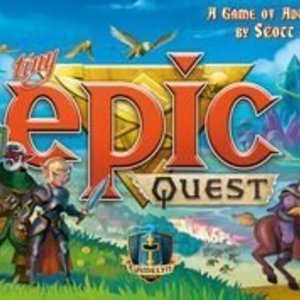
Tiny Epic Quest
Tabletop Game
A world of peace has been torn asunder by the opening of a vile portal from the goblin kingdom....
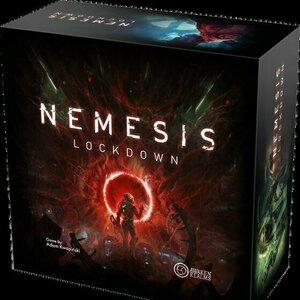
Nemesis Lockdown
Tabletop Game
Nemesis Lockdown is first stand alone expansion to Nemesis. During the game, players will be taken...
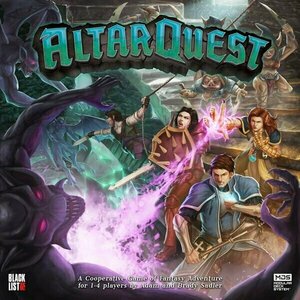
Altar Quest
Tabletop Game
In Altar Quest, each player chooses to play as a hero with their own cards and equipment. The...
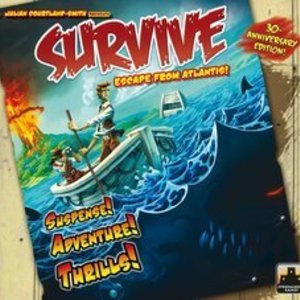
Survive: Escape from Atlantis!
Tabletop Game
Survive is a cutthroat game where players seek to evacuate their pieces from an island that is...
BoardGames ChildhoodGames Underratedgames RetroGames

